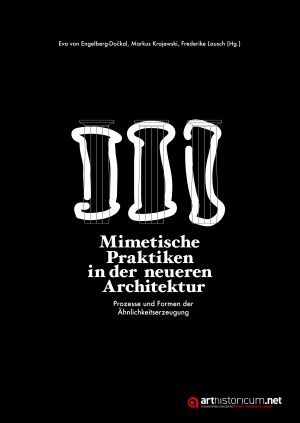
Zitationsvorschlag
Lizenz

Dieses Werk steht unter der Lizenz Creative Commons Namensnennung - Weitergabe unter gleichen Bedingungen 4.0 International.
Identifier
Veröffentlicht
Mimetische Praktiken in der neueren Architektur
Prozesse und Formen der Ähnlichkeitserzeugung
Praktiken des Zitierens, Kopierens, der Montage, des Rekonstruierens, der Analogiebildung und der Mimikry sind gängige Verfahren im architektonischen Alltag. Dennoch ist das Paradigma der Originalität bis heute beherrschend und verstellt oft den Blick auf mimetische Phänomene. Der Tagungsband versammelt zwölf im Jahr 2016 auf der Konferenz „Ähnlichkeit: Prozesse und Formen“ in der Bibliothek der Stiftung Werner Oechslin in Einsiedeln gehaltene Vorträge, ergänzt durch zwei Artikel der Herausgeberinnen. Der Fokus der Tagung lag auf aktuellen Forschungen zu Praktiken der Ähnlichkeitserzeugung in der neueren Architektur und wurde von Teilprojekten der DFG-SNF-Forschergruppe „Medien und Mimesis“ organisiert.






